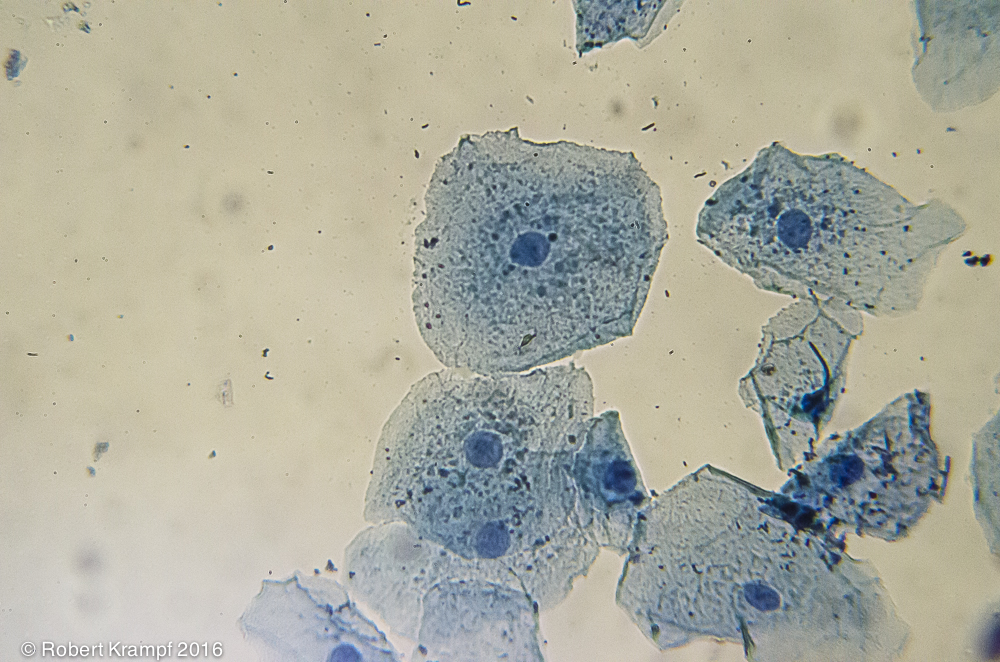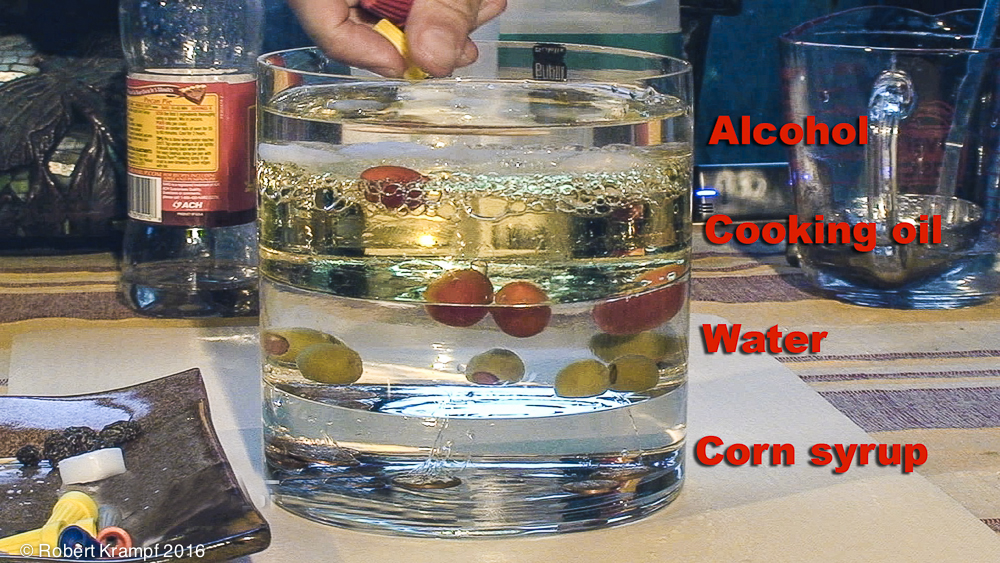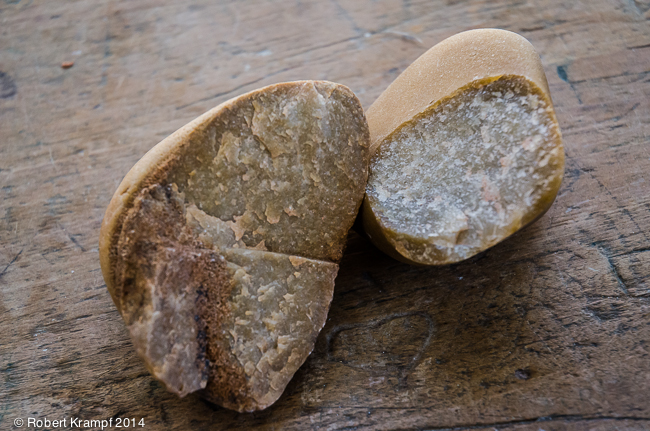Here are some science questions from the Sixth, Seventh, and Eighth Grade Standards to help you test your knowledge of the Next Generation Sunshine State Standards.
The questions are chosen randomly, so this quest will be different each time you reload the page.
* Click here to see only the most recently added questions.

These cells DO NOT have a cell wall. What does that tell us?
-
These are young cells.
No. Even new cells can have a cell wall. -
These are NOT plant cells.
Yes! Plant cells are surrounded by a cell wall, which provides structure and protection. -
These are NOT animal cells.
No. Animal cells do not have a cell wall. -
These are dead cells.
No. Being alive or dead does not change whether a cell has a cell wall or not.
Click to see which state standards this question tests, and which of my videos, experiments, and other resources support that topic.
Florida
SC.6.L.14.4 Compare and contrast the structure and function of major organelles of plant and animal cells, including cell wall, cell membrane, nucleus, cytoplasm, chloroplasts, mitochondria, and vacuoles.
| Osmosis | video, checked |
| Review Cells-1 | practice |
| Review Cells-2 | practice |
| Review Cells-3 | practice |
| Review Cells-4 | practice |
Utah
UT.7.III.1.c Differentiate between plant and animal cells based on cell wall and cell membrane.
| Review Cells-1 | practice |
| Review Cells-2 | practice |
NGSS
MS-LS1-2 Develop and use a model to describe the function of a cell as a whole and ways parts of cells contribute to the function.
| Osmosis | video, checked |
| Review Cells-1 | practice |
| Review Cells-2 | practice |
| Review Cells-3 | practice |
| Review Cells-4 | practice |

In the Yeast and Sugar video, I added different kinds of sugar to bottles with yeast and warm water. One of the bottles was a control. What should have been in that bottle?
-
Just water
No. With just water, you are removing two variables, the yeast and the sugar. You only want to remove the independent variable.
-
Water and yeast
Yes! A control should be exactly like the others, but without the independent variable (the variable you are changing in the experiment.) In this case, the variable you are changing is the kind of sugar, so the control should have everything except for the sugar. -
Water and sugar
No. The yeast is not the independent variable, so leaving it out would not be correct. -
Water and salt
No. Adding salt would be adding a new variable, which is not correct.
Click to see which state standards this question tests, and which of my videos, experiments, and other resources support that topic.
Florida
SC.5.N.1.4 Identify a control group and explain its importance in an experiment.
| Bacteria and Antibiotics | video, ClosedCaptions |
| Testing a Leaf for Starch | video, ClosedCaptions |
| Review Scientific Process-1 | practice |
| Review Scientific Process-2 | practice |
| Review Scientific Process-9 | practice |
| Review Scientific Process-11 | practice |
SC.7.N.1.4 Identify test variables (independent variables) and outcome variables (dependent variables) in an experiment.
| Floating Cups | video, checked |
| Testing for Tannic Acid | video |
| Review Scientific Process-1 | practice |
| Review Scientific Process-2 | practice |
| Review Scientific Process-9 | practice |
| Review Scientific Process-11 | practice |
Utah
NGSS
3-5-ETS1-3 Plan and carry out fair tests in which variables are controlled and failure points are considered to identify aspects of a model or prototype that can be improved.
| What is Science? | video, ClosedCaptions |
| Review Scientific Process-1 | practice |
| Review Scientific Process-2 | practice |
| Review Scientific Process-7 | practice |
| Review Scientific Process-9 | practice |
| Review Scientific Process-10 | practice |
| Review Scientific Process-11 | practice |

Which of the following states of matter will change its shape to fit its container, but not its size?
-
Solid
No. Under normal pressure, solids do not change their shape or size to fit their container. -
Liquid
Yes. Liquids will take on the shape of their container, but do not change their size. -
Gas
No. Gases will expand to fill their container, taking on both its shape and size. -
Plasma
No. Like gases, plasmas take on the size and shape of their container.
Click to see which state standards this question tests, and which of my videos, experiments, and other resources support that topic.
Florida
SC.2.P.8.3 Recognize that solids have a definite shape and that liquids and gases take the shape of their container.
| Egg States | video, checked |
| Wonderful Water | video, checked |
| Ice Cream Science | video, checked |
| Raw Egg or Boiled? | video, checked |
| Review Matter-1 | practice |
SC.5.P.8.1 Compare and contrast the basic properties of solids, liquids, and gases, such as mass, volume, color, texture, and temperature.
>>> Teacher Page: States of Matter
| Air Space | video |
| A Bouncing Water Balloon | video |
| Egg States | video, checked |
| Experimenting with Dry Ice | video, free, checked |
| Wax and Wood, part 1 | video, checked |
| Wax and Wood, part 2 | video, checked |
| Ice Cream Science | video, checked |
| Raw Egg or Boiled? | video, checked |
| Air has Weight | text page |
| Teach It Right the First Time. | text page, free |
| Review Matter-2 | practice |
| Review Matter-1 | practice |
| Review Matter-3 | practice |
| Review Weather-10 | practice |
SC.8.P.8.1 Explore the scientific theory of atoms (also known as atomic theory) by using models to explain the motion of particles in solids, liquids, and gases.
| A Bouncing Water Balloon | video |
| Egg States | video, checked |
| Experimenting with Dry Ice | video, free, checked |
| Ice Cream Science | video, checked |
| Expansion of Solids | video, ClosedCaptions, checked |
| Review Matter-1 | practice |
| Review Matter-3 | practice |
Utah
UT.5.I.2.a Identify the physical properties of matter (e.g., hard, soft, solid, liquid, gas).
| Crushed Can | video, checked |
| A Bouncing Water Balloon | video |
| Egg States | video, checked |
| Experimenting with Dry Ice | video, free, checked |
| Wax and Wood, part 1 | video, checked |
| Wax and Wood, part 2 | video, checked |
| Ice Cream Science | video, checked |
| Raw Egg or Boiled? | video, checked |
| Review Matter-1 | practice |
| Review Matter-3 | practice |
UT.7.I.1.c Diagram the arrangement of particles in the physical states of matter (i.e., solid, liquid, gas).
| A Bouncing Water Balloon | video |
| Egg States | video, checked |
| Ice Cream Science | video, checked |
| Review Matter-1 | practice |
UT.8.I.1.b Classify substances based on their chemical and physical properties (e.g., reacts with water, does not react with water, flammable or nonflammable, hard or soft, flexible or nonflexible, evaporates or melts at room temperature).
| Wax and Wood, part 2 | video, checked |
| Ice Cream Science | video, checked |
| Scaring Pepper | video, checked |
| Making Turmeric Paper | video, checked |
| Testing for Tannic Acid | video |
| Relighting Candles | video, checked |
| How They Get the Sparks in a Sparkler | video |
| Orange Flash | video |
| Stale Bread | video |
| Cabbage Indicator | video, checked |
| Experimenting with Dry Ice | video, free, checked |
| Making Butter | video, free, ClosedCaptions, Updated |
| Wax and Wood, part 1 | video, checked |
| Acid Hunt | text page |
| A Clean Trick | text page |
| Review Matter-1 | practice |
NGSS

This is the density column from the Making a Density Column video. Notice that the olives are floating at the boundary between the water and the corn syrup. What does that tell us?
-
The olives are less dense than the water, and more dense than the corn syrup.
No. If the olives were less dense than the water, they would float on top of the water layer. -
The water is denser than the olives.
No. If the water was denser than the olives, then the olives would float on top of the water layer. -
The corn syrup is less dense than the olives.
No. If the corn syrup was less dense than the olives, the olives would sink all the way to the bottom. -
Olives are denser than water, and less dense than corn syrup.
Yes! Because the olives are denser than water, they sink to the bottom of the water layer. Because they are less dense than corn syrup, the olives float on top of the corn syrup layer.
Click to see which state standards this question tests, and which of my videos, experiments, and other resources support that topic.
Florida
SC.8.P.8.4 Classify and compare substances on the basis of characteristic physical properties that can be demonstrated or measured; for example, density, thermal or electrical conductivity, solubility, magnetic properties, melting and boiling points, and know that these properties are independent of the amount of the sample.
| Density: Ice, Oil, and Water | video, checked |
| Wax and Wood, part 1 | video, checked |
| Wax and Wood, part 2 | video, checked |
| Identifying Minerals | video, learnalong |
| Making Turmeric Paper | video, checked |
| Testing for Tannic Acid | video |
| Cartesian Diver | video, ClosedCaptions, checked |
| Growing Crystals Under the Microscope | video, free, learnalong, checked |
| Stale Bread | video |
| Floating Bubbles | video, checked |
| Candles in a Jar, part 2 | video, ClosedCaptions, checked |
| Candles in a Jar, part 1 | video, ClosedCaptions, checked |
| Microscopes: Growing Crystals | video, free, learnalong, Updated |
| Review Matter-5 | practice |
Utah
UT.7.I.2.b Use observations to predict the relative density of various solids and liquids.
| Density: Ice, Oil, and Water | video, checked |
| Fish in a Bucket | text page |
| Review Matter-5 | practice |
UT.7.I.2.d Describe the relationship between mass and volume as it relates to density.
| Cartesian Diver | video, ClosedCaptions, checked |
| Floating Bubbles | video, checked |
| Candles in a Jar, part 2 | video, ClosedCaptions, checked |
| Candles in a Jar, part 1 | video, ClosedCaptions, checked |
| The Difference Between Weight and Mass | video, checked |
| Density: Ice, Oil, and Water | video, checked |
| A Cup of Cold | text page |
| Air has Weight | text page |
| Fish in a Bucket | text page |
| Review Matter-5 | practice |
NGSS

This is called Quartzite. It was once sandstone, but heat and pressure changed it by fusing the grains of sand to each other, making it much harder. What kind of rock is it?.
-
Igneous
No. Igneous rocks formed from magma or lava. That would have melted the sand grains. This is not an igneous rock. -
Sedimentary
No. Sedimentary rocks are deposited by wind, water, ice, or gravity, and they often contain fossils. When it was sandstone it was a sedimentary rock. -
Metamorphic
Yes!. This quartzite been changed by heat and pressure from a different kind of rock. It is metamorphic. -
Quartzite is not a rock.
No. Quartzite is a naturally occurring solid that forms large layers in the Earth. Quartzite is a rock.
Click to see which state standards this question tests, and which of my videos, experiments, and other resources support that topic.
Florida
SC.4.E.6.1 Identify the three categories of rocks: igneous, (formed from molten rock); sedimentary (pieces of other rocks and fossilized organisms); and metamorphic (formed from heat and pressure).
| Bioclastics: Rocks With No Minerals | video |
| Evaporites | video, learnalong, checked |
| Igneous Rocks and Bubbles | video, free, learnalong, Updated |
| Sedimentary Rocks | video, learnalong |
| What is a Rock? | video, learnalong, checked |
| Foliated and Unfoliated Rocks | text page, learnalong |
| Identifying Igneous Rocks | text page, learnalong |
| Intrusive and Extrusive Igneous Rocks | text page, learnalong |
| Light and Dark Minerals | text page, learnalong |
| Homemade Fossil Dig | text page |
| Review Rocks-1 | practice |
| Review Rocks-2 | practice |
| Review Rocks-3 | practice |
| Review Rocks-4 | practice |
| Review Rocks-5 | practice |
| Review Rocks-6 | practice |
| Review Rocks-8 | practice |
| Review Rocks-9 | practice |
| Review Rocks-7 | practice |
| Review Rocks-10 | practice |
| Review Rocks-10 | practice |
| Review Rocks-10 | practice |
SC.7.E.6.2 Identify the patterns within the rock cycle and relate them to surface events (weathering and erosion) and sub-surface events (plate tectonics and mountain building).
| Bioclastics: Rocks With No Minerals | video |
| Weathering and Erosion | video, learnalong, checked |
| Evaporites | video, learnalong, checked |
| What is a Rock? | video, learnalong, checked |
| The Rock Cycle | video, learnalong |
| Change: Fast and Slow | video |
| Erosion | video, checked |
| Continuous Change | video, checked |
| Review Rocks-1 | practice |
| Review Erosion-1 | practice |
| Review Erosion-2 | practice |
| Review Erosion-3 | practice |
| Review Erosion-4 | practice |
| Review Erosion-5 | practice |
| Review Rocks-4 | practice |
| Review Rocks-5 | practice |
| Review Rocks-6 | practice |
| Review Rocks-8 | practice |
| Review Rocks-9 | practice |
| Review Rocks-7 | practice |
| Review Rocks-10 | practice |
| Review Rocks-10 | practice |
Utah
UT.4.III.1.a Describe the differences between minerals and rocks.
| Definition of a Mineral | video, checked |
| What is a Mineral? | video, checked |
| Identifying Minerals | video, learnalong |
| What is a Rock? | video, learnalong, checked |
| Bioclastics: Rocks With No Minerals | video |
| Review Rocks-9 | practice |
| Review Rocks-7 | practice |
| Review Rocks-10 | practice |
| Review Rocks-1 | practice |
| Review Rocks-4 | practice |
| Review Rocks-5 | practice |
| Review Rocks-6 | practice |
| Review Rocks-8 | practice |
NGSS
4-ESS1-1 Identify evidence from patterns in rock formations and fossils in rock layers to support an explanation for changes in a landscape over time.
| Reading the Rocks: The Present is the Key to the Past | video, ClosedCaptions |
| Paleo Cookies | video |
| Evaporites | video, learnalong, checked |
| Igneous Rocks and Bubbles | video, free, learnalong, Updated |
| Sedimentary Rocks | video, learnalong |
| Reading the Rocks: Law of Superposition | video |
| Reading the Rocks: Law of Crosscutting | video |
| What is a Rock? | video, learnalong, checked |
| Homemade Fossil Dig | text page |
| Review Rocks-1 | practice |
| Review Geologic Time-1 | practice |
| Review Rocks-4 | practice |
| Review Geologic Time-2 | practice |
| Review Rocks-5 | practice |
| Review Rocks-6 | practice |
| Review Rocks-8 | practice |
| Review Rocks-9 | practice |
| Review Rocks-7 | practice |
| Review Rocks-10 | practice |
| Review Geologic Time-3 | practice |
MS-ESS2-1 Develop a model to describe the cycling of Earth’s materials and the flow of energy that drives this process.
| What is a Rock? | video, learnalong, checked |
| The Rock Cycle | video, learnalong |
| Bioclastics: Rocks With No Minerals | video |
| Evaporites | video, learnalong, checked |
| Definition of a Mineral | video, checked |
| Igneous Rocks and Bubbles | video, free, learnalong, Updated |
| What is a Mineral? | video, checked |
| Identifying Minerals | video, learnalong |
| Sedimentary Rocks | video, learnalong |
| Light and Dark Minerals | text page, learnalong |
| Review Rocks-1 | practice |
| Review Rocks-2 | practice |
| Review Rocks-3 | practice |
| Review Rocks-4 | practice |
| Review Rocks-5 | practice |
| Review Rocks-6 | practice |
| Review Rocks-8 | practice |
| Review Rocks-9 | practice |
| Review Rocks-7 | practice |
| Review Rocks-10 | practice |
| Review Rocks-10 | practice |
| Review Rocks-10 | practice |
